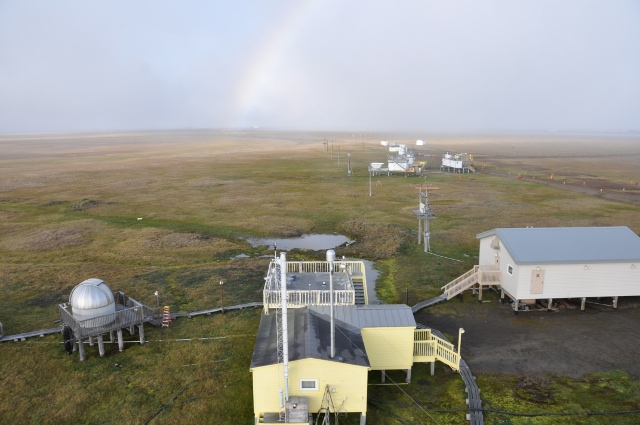NOAA's Barrow, Alaska, Observatory marks 40 years of continuously monitoring carbon pollution in the Arctic
July 24, 2013
40 years ago today, on July 24, 1973, NOAA’s atmospheric observatory in Barrow, Alaska—the U.S.’ northernmost city, located at the tip of the North Slope—began measurements of carbon dioxide pollution with a continuous analyzer, providing one of the world’s most important records of this potent heat-trapping gas.
CO2 steadily increased throughout the measurement record, as it does everywhere on Earth, caused by the burning of coal, oil, and natural gas. Point Barrow, located in the Arctic, has always been a little higher than other CO2 measurement sites at mid-latitudes and further south. This is mostly caused by the atmospheric circulation which temporarily "traps" pollution emissions from lower latitudes effectively in the Arctic. Last year, the monthly average for Barrow in May topped the 400 parts per million milestone—a first for the globe—registering at 400.4 ppm, with this year slightly higher at 403.1 ppm.
Flask sampling had already started on 25 April 1971. The flasks were measured in Boulder, Colo., and the results compared to the analyzer at Barrow. Making measurements by two or more independent methods was a hallmark of our program since the beginning. It was also practiced at our other long-term baseline observatories Mauna Loa (Hawaii), American Samoa, and the South Pole.
The rate of increase of CO2 has been substantially higher in the last ten years than at any time since the modern well-calibrated measurements in the atmosphere started. The rate of fossil fuel burning was also at a record high during the last ten years. Earlier this year, for several days in May, the Mauna Loa Observatory registered daily mean CO2 in clean air conditions above 400 ppm for the first time.
For more information on NOAA’s Global Monitoring Division’s greenhouse gas monitoring efforts and its six atmospheric observatories, visit: http://www.esrl.noaa.gov/obop/.

